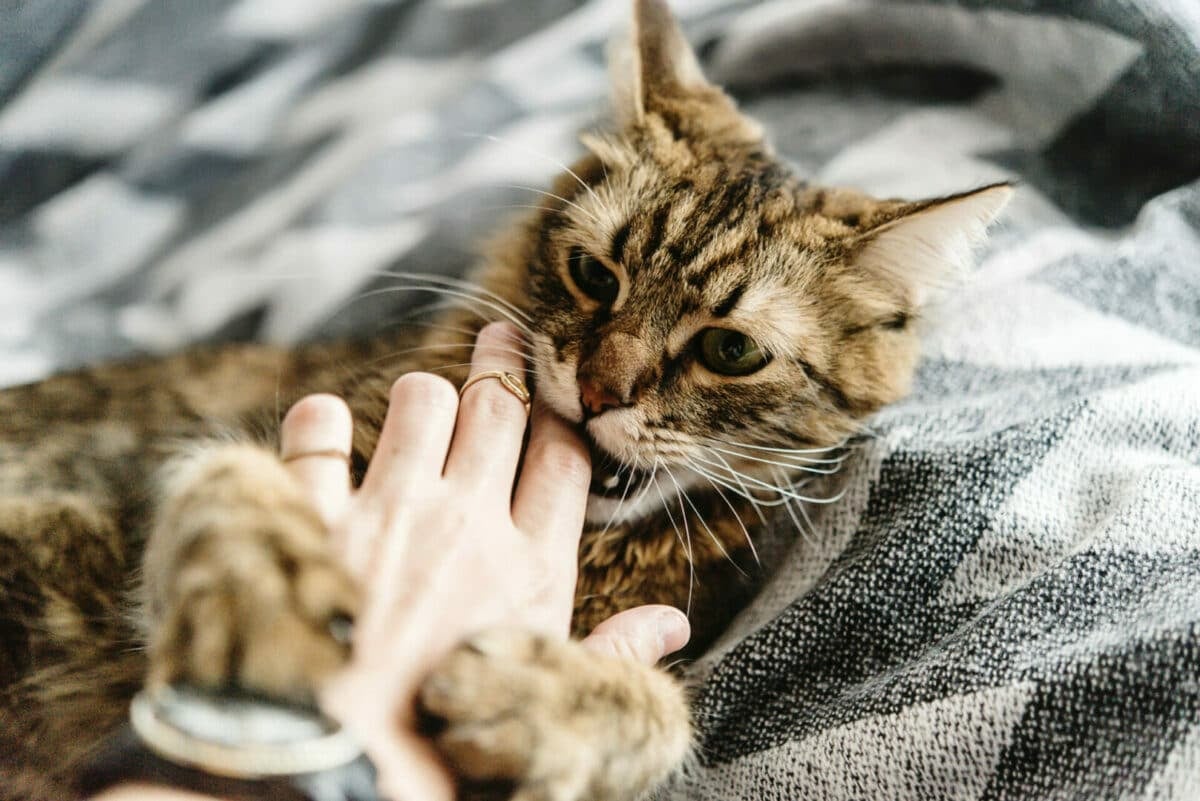For many of us cat lovers, we have a soft spot in our hearts for cats that don’t have warm beds to sleep on at night. The stray life is no life for a cat, and a feral cat life is even harder. If you’ve ever rescued a cat off the streets, transitioning them into life inside is often easier said than done. Patience is key, obviously, but there are some tips you can implement to make the transition from outdoor cat to indoor cat go more smoothly.
Keep reading to learn our tips on how to transition an outdoor cat to an inside only kitty…
First things first: establish trust
The winter time is particularly rough for a cat that’s living outdoors. There are tips to help keep them safe, but it’s best to provide enclosed shelter away from the elements, predators, and other dangers. I’ve seen many heartwarming videos and heard several beautiful stories of lonely street cats winning the hearts of animal lovers and finding themselves forever homes. So, if you’ve got your heart set on transitioning a street cat to an indoor cat, remain positive!
For cats that live exclusively outdoors, earning their trust is not always easy. Your cat has a fight or flight response like no other. And this is especially true in the case of outdoor cats that must always be on guard. A feral is often much more difficult to establish trust with due to their lack of human interaction early in life. In their eyes, humans are perceived as a threat. A stray is typically more interested in human contact, but still allow the cat to come to you at their leisure.
You never want to force affection on a cat, and some cats are naturally more or less affectionate than others.
It’s important to allow the outdoor cat to know that you don’t pose a threat, and that you are letting them dictate the relationship. Cats like things on their terms, whether it’s a cat off the street or a pampered princess in your living room. Showing a cat that you’re interested in them—but practicing calm movements and a soft voice in their presence—goes a long way in establishing trust.
Take things slow, don’t rush it
It can pull at your heartstrings once you fall in love with an outdoor cat, but don’t rush the transition from outdoor cat to indoor cat. Doing so could make matters worse and cause the cat not to trust you. Like I mentioned above, cats like things strictly on their terms. Perhaps, make the inside of your home appear like a tempting environment. Doing so can create curiosity in their minds. And you know what that means? They just might mosey in on their own! Super smelly wet cat food is pretty irresistible to most felines, so start with that.
The Humane Society suggests introducing common cat items such as scratching posts and litter boxes, and also serving meals for the cat indoors. If you have a garage or an enclosed patio, utilize it as you work your way closer into the home.
Be sure to have the cat taken in to see the vet—and scanned for a microchip
I know that this might not be what you want to hear, but it’s very important to note. Accidents can happen and cats can go missing. Doors can get left open by accident. Visitors in the home might not realize a cat isn’t allowed outdoors. There are really a great number of possibilities as to why an indoor only cat can end up outdoors in unfamiliar territory.
You would take any cat in your care to the vet, and transitioning an outdoor cat to indoor cat is no different. Veterinary practices and rescues/shelters will automatically scan the cat for a microchip anyways. A stray cat always has a story of how they ended up without a home. And your kindness just might be the happy ending to bring them back home to the people who love them.
If that isn’t the case, well, it looks like you just transitioned an outdoor cat to indoors to have for the rest of your nine lives together!
Be sure to keep the indoor environment engaging
For a cat which has lived outdoors, there are lots of temptations they aren’t quick to forget about. It’s crucial that you offer your newly transitioned cat with plenty of things to utilize that powerful brain of theirs. You can also treat your new cat housemate to some things that all cats love—like scratching posts, cat towers/trees, and toys. Cats are highly intelligent beings and thrive on mental stimulation, so don’t let all those cat naps fool you. (Check out our enrichment ideas for cats here!)
If you want another way to offer your outdoor cat which has been transitioned to the indoors a taste of their old life, consider building them a catio. That way, they can enjoy the great outdoors safely, and you also won’t have to worry about them getting into fights with other street cats, killing wildlife, or being hit by a vehicle. A catio is a win-win for both cat owners and their felines, and it doesn’t have to be super elaborate to make your kitty happy either.
Need some additional tips for caring for ferals and strays in the neighborhood? Read them here on cattitudedaily.com.






